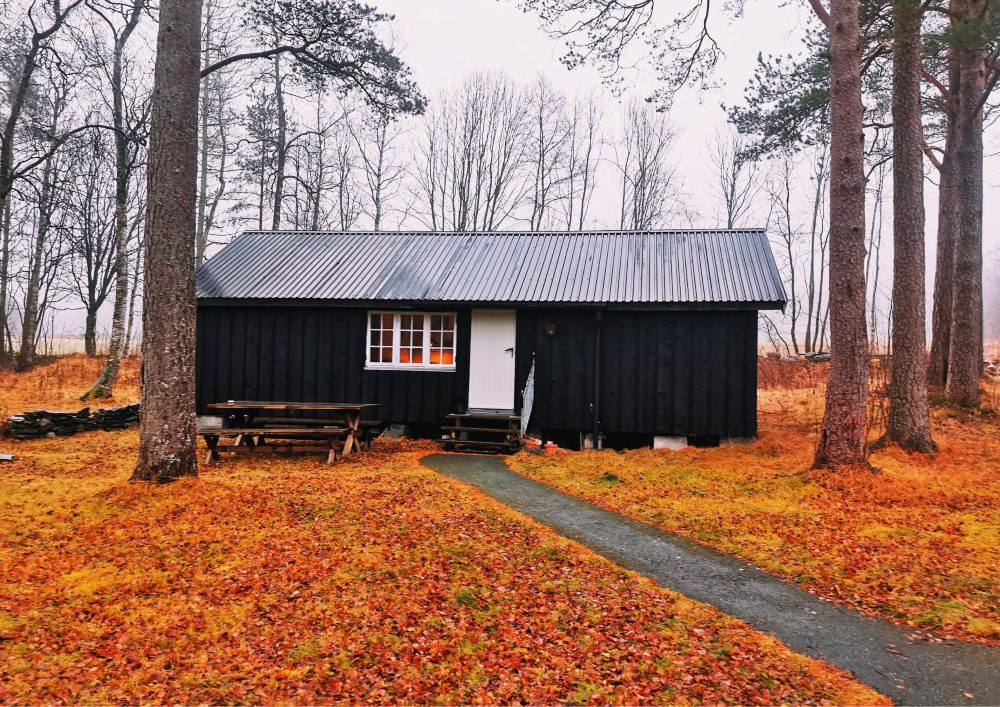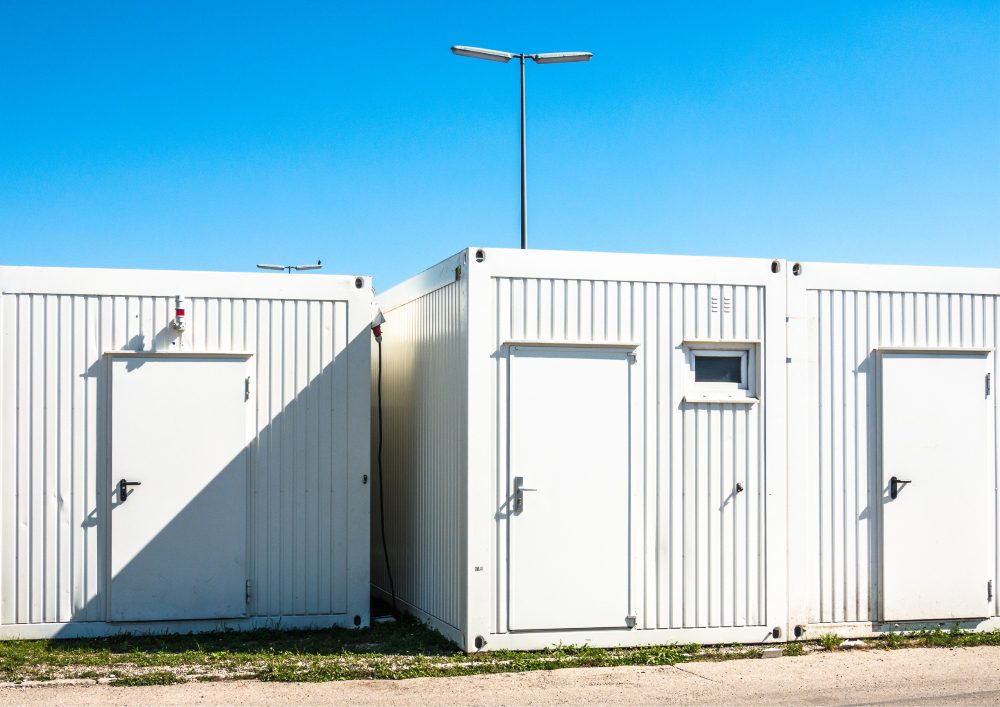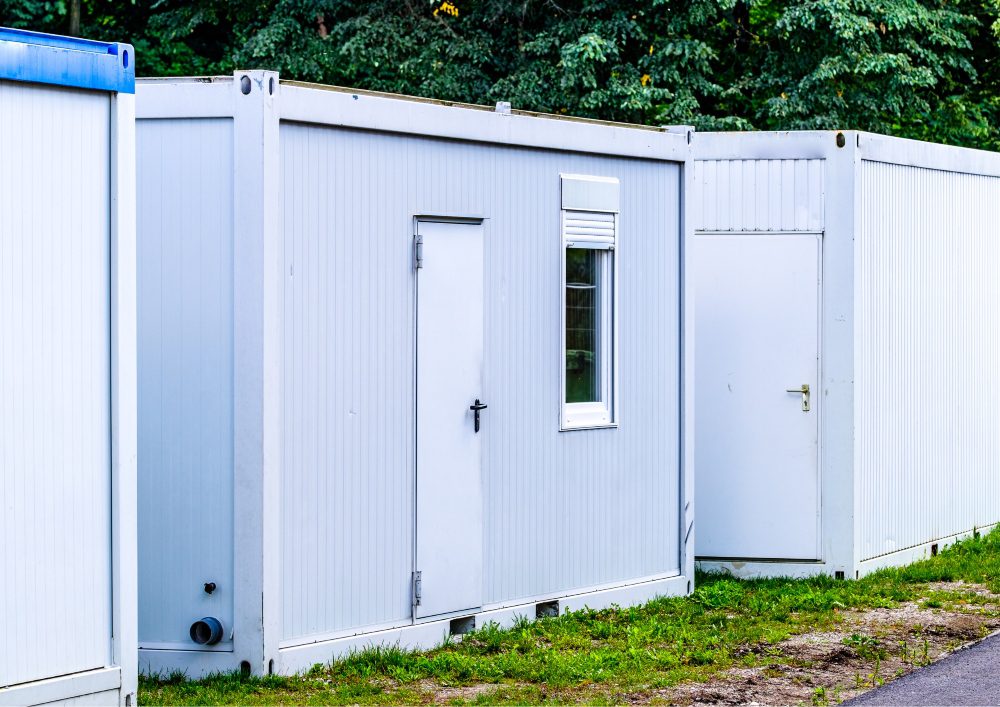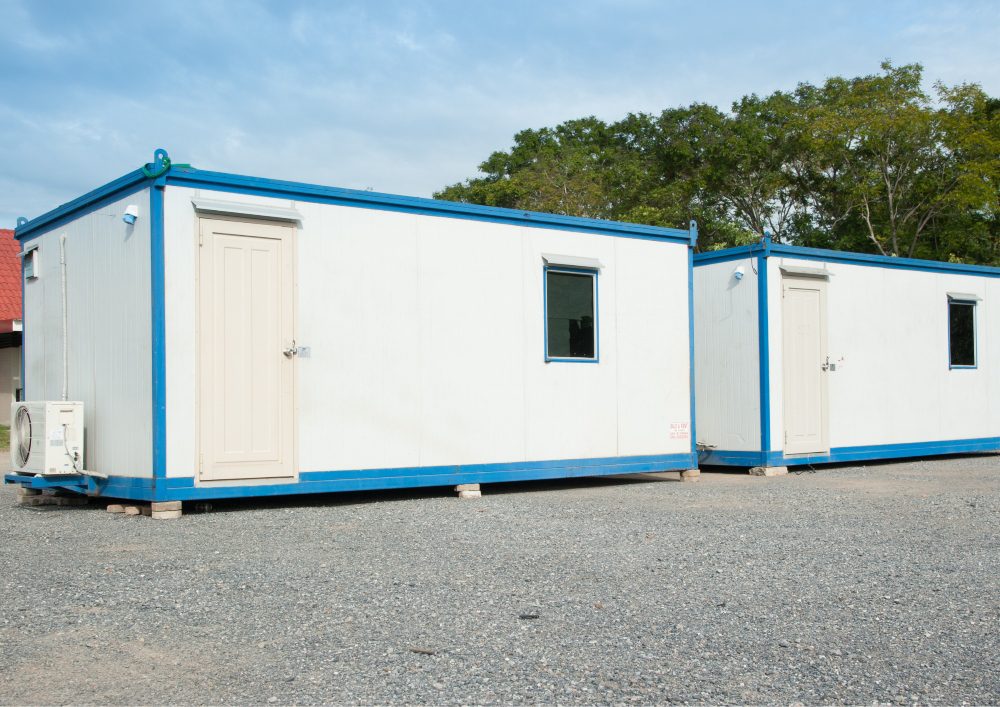Last Updated on October 16, 2023 by teamobn

Are you interested in revolutionary and sustainable housing solutions? Look no further! In this article, explore the innovative concept of building homes using shipping containers. Discover how these steel giants are transformed into cozy and eco-friendly living spaces that are taking the world of architecture by storm.
Shipping container homes are not only unique but also environmentally responsible. With a growing focus on sustainable living, these homes become a compelling alternative to traditional construction. Delve into the reasons why these homes are gaining popularity and examine the many benefits they bring to homeowners and the planet.

Interested in creating your very own shipping container home? Let this be your guide through the entire process, from selecting the right container and design to the necessary permits and construction. You’ll learn about the creative ways people are customizing these homes to suit their lifestyles and design preferences.
Plunge into the world of shipping container homes. Unveil some valuable resources, expert tips, and real-life examples to help you get started on your own container home project. Join the eco-friendly housing revolution and see how innovative and sustainable living spaces are within your reach.
Are you ready to explore how you can turn these industrial giants into unique and sustainable living spaces?
Contents
The Appeal of Shipping Container Homes

Turning industrial giants into unique and sustainable living spaces is an exciting endeavour that holds numerous benefits. Here’s a guide on how you can achieve this transformation:
Assessment and Planning
Conduct a thorough assessment of the industrial site, considering its location, structural integrity, and historical significance. Collaborate with architects, engineers, and sustainability experts to create a comprehensive plan.
In-Depth Site Assessment
Begin with a meticulous analysis of the site’s location. Evaluate its proximity to essential amenities such as schools, grocery stores, public transportation, and medical facilities. Assess the neighbourhood’s character, safety, and accessibility. Understanding the site’s location is significant for ensuring that it meets the practical needs and preferences of future residents.
Collaborative Planning for Shipping Container Homes
Partner with architects who specialize in designing shipping container homes. Together, envision a design that skillfully merges the industrial aesthetic of shipping containers with modern functionality. This collaborative effort should take into account factors like interior space utilization, natural lighting, and creative container placement to create a distinctive and appealing living environment.
Sustainable Design

Implement eco-friendly design principles, such as energy-efficient insulation, airtight construction, and heat transfer techniques. Do sustainable building practices to reduce the carbon footprint.
Energy-Efficient Insulation
Energy-efficient insulation is a cornerstone of sustainable living spaces. It plays a significant role in maintaining a comfortable indoor climate while minimizing energy consumption.
Types of Insulation
Choose insulation materials like spray foam, cellulose, or recycled denim that provide excellent thermal performance. Install insulation in walls, floors, and ceilings to create a well-insulated envelope, reducing heat loss in the winter and heat gain in the summer.
Airtight Construction
Ensure the building envelope is airtight, preventing drafts and thermal leaks. Utilize double-glazed, energy-efficient windows and doors to minimize heat transfer.
Airtight Building Envelope
The foremost objective in the transformation of shipping containers into habitable homes is to establish a meticulously airtight building envelope. This involves a comprehensive approach to seal every conceivable gap, seam, or potential point of air leakage in shipping container homes.
The purpose of this is to create a barrier that effectively prevents the infiltration of external drafts and the escape of conditioned air from the interior, thereby ensuring a comfortable and energy-efficient indoor environment.

Drafts and Thermal Leaks
By meticulously sealing all structural seams, joints, and openings, you can effectively eliminate drafts and thermal leaks, thereby preventing undesirable temperature fluctuations within the container home. This not only enhances occupant comfort but also significantly reduces the energy required to maintain the desired temperature, resulting in cost savings and a reduced carbon footprint.
Double-Glazed Windows and Energy-Efficient Doors
An integral aspect of fortifying the building envelope is the selection of double-glazed, energy-efficient windows and doors. Double-glazing involves the use of two panes of glass with a layer of insulating gas in between, providing exceptional thermal insulation.
Energy-efficient doors are designed to minimize heat transfer, thanks to advanced materials and construction techniques. This combination not only acts as a thermal barrier but also helps in sound insulation, enhancing the overall comfort and livability of the shipping container homes.
The implementation of double-glazed windows and energy-efficient doors plays a pivotal role in reducing heat transfer. These components act as a formidable defence against the transference of heat between indoor and outdoor environments. By limiting heat exchange, the shipping container homes remain cooler in hot weather and warmer in cold weather.
Adaptive Reuse
Create open, flexible floor plans that provide a sense of spaciousness and versatility. These floor plans are conceived with meticulous attention to detail, optimizing every square foot of your container home to its full potential.
The concept revolves around creating a clutter-free and airy ambience, promoting a sensation of openness and expansiveness. In doing so, these designs eliminate the traditional feeling of being hemmed in by four metal walls, replacing it with a spacious, liberating atmosphere that invites creativity and personalization.
Green Spaces and Landscaping
Integrate greenery, gardens, and outdoor areas to promote a connection with nature and improve air quality. Use native plants and sustainable landscaping practices to reduce maintenance and water usage.
The inclusion of greenery and gardens within your shipping container home design is akin to inviting nature indoors, creating an environment that resonates with the calming presence of the outdoors. Whether through potted plants, vertical gardens, or a dedicated outdoor area, these elements bring a sense of tranquillity and vitality to your living space.
Energy Efficiency

Renewable Energy Sources
Incorporating renewable energy sources is a forward-thinking approach to sustainable living. By harnessing clean energy, you can reduce your reliance on non-renewable sources and reduce your carbon footprint.
Solar Panels
Install solar panels on rooftops or in strategic locations to generate electricity from sunlight. This sustainable energy source reduces electricity bills and provides an eco-friendly power supply. Explore options for solar panels and other renewable energy sources to further reduce utility costs.
Wind Turbines
In suitable locations, consider installing small wind turbines to generate electricity from wind energy. Wind power complements solar energy and contributes to a more sustainable, diversified energy portfolio.
Accessibility and Safety
Ensure that the transformed spaces meet modern safety and accessibility standards. Incorporate innovative solutions for accessibility, such as ramps or elevators, where necessary.
The dedication to this mission extends beyond mere compliance; it extends to the pioneering of inventive approaches for accessibility. By embracing such innovative measures, you are not only ensuring that these living spaces meet or exceed established safety norms but also that they are exquisitely user-friendly, providing secure, efficient, and inclusive environments catering to the diverse needs and preferences of their occupants.
With these steps, you can successfully turn shipping containers into unique and sustainable living spaces that contribute to a more environmentally friendly and community-oriented future.
The Wrap Up
From creative designs to the incorporation of cutting-edge technology, the possibilities are endless. As times pass, the growing interest in shipping container homes promises a future where innovation and sustainability meet, reshaping the way people think about housing and its potential.
These innovative homes are not just structures; they represent a bold step toward a more environmentally conscious and dynamic approach to living, combining functionality, style, and sustainability in one harmonious package.
Frequently Asked Questions
Q: Are shipping container homes affordable?
A: Yes, shipping container residences have the potential to be an affordable alternative to conventional home construction, as utilizing recycled containers and their modular design can lead to cost savings.
Q: Is it environmentally friendly to build with shipping containers?
A: Yes, opting for shipping container homes for homes is considered environmentally friendly because it repurposes and recycles existing materials. It reduces the need for new construction materials and minimizes waste.
Q: How do I obtain shipping containers for building a home?
A: Shipping containers can be purchased from shipping companies, container suppliers, or online marketplaces. It’s essential to choose containers that are in good condition and have been inspected for suitability.








